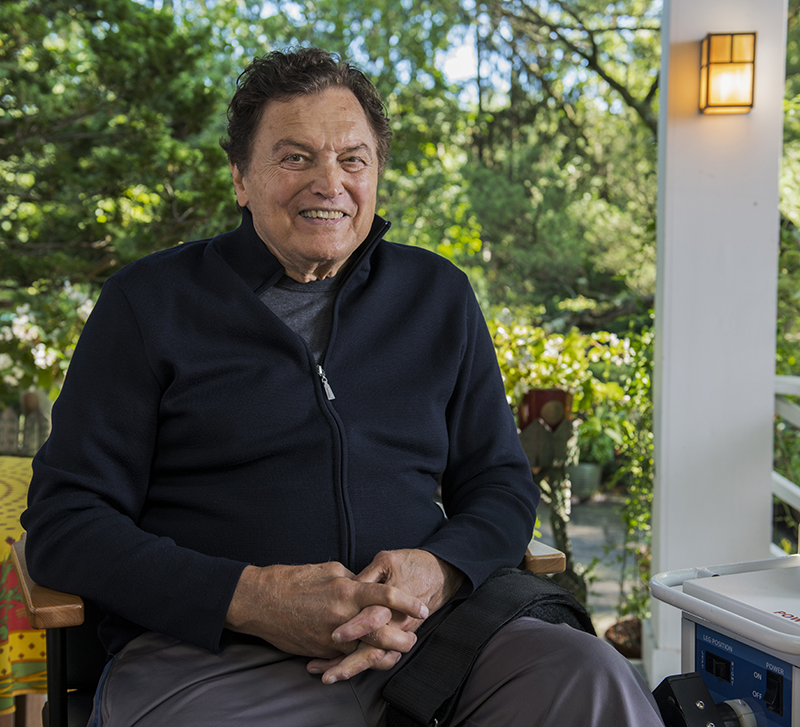
Paul Ewing isn’t a doctor. He doesn’t even play one on television. Still, he doesn’t think it should take knee replacement patients six months to a year after surgery to regain range of motion and strength. So, he came up with a solution — the X10.
The X10 is a machine patients rent for four to six weeks after surgery. It uses pressure-sensing technology to help users regain range of motion and strength by utilizing both controlled pressure and target motion angles to move the leg. Patients set the parameters, maximizing the pressure needed to move their leg without exceeding their pain threshold.
“Working just under a patient’s pain threshold avoids damaging the knee and causing further swelling, reducing the need for prescription pain medication,” says Ewing, who retired after selling two tech-related companies, including Halley Orthopedics, which he co-founded with his orthopedic surgeon friend, Dr. David Halley, before developing X10. “While traditional therapists play a critical role in rehabilitation, the smart technology in the X10 will precisely repeat motions a human cannot emulate.”
Successful recovery from knee replacement surgery is a race against time, according to Ewing. Fluid caused by post-surgical internal bleeding must be moved away from the joint tissues until the swelling subsides. Traditionally, this has been accomplished through standard physical therapy done three to five times per week.
X10 therapy includes three 30-minute sessions per day, seven days a week, for about a month; it’s all done in the comfort of the patient’s home. Sessions are guided by X10 physical therapy staff who monitor patient recovery data from the machine. Results are saved and transmitted to both the patient’s personal therapist and their doctor, to track progress.
An engineer by trade, Ewing, together with Halley, devised the X10. According to Ewing, there are now more than 200 X10 machines in circulation, and they’ve helped approximately 5,000 patients nationwide over the past 12 years. Many patients pay for the treatment — which can cost thousands of dollars — themselves, since most insurance companies have yet to recognize its benefits although the treatment is covered by Blue Cross Blue Shield PPO Plans and Medicare through the X10 Home Health division.
“Traditionally, patients have lost 50 percent or more of their quadriceps strength at one month post-surgery,” Halley says. “On average, X10 patients regain all or more of their preoperative strength within four to six weeks.”












